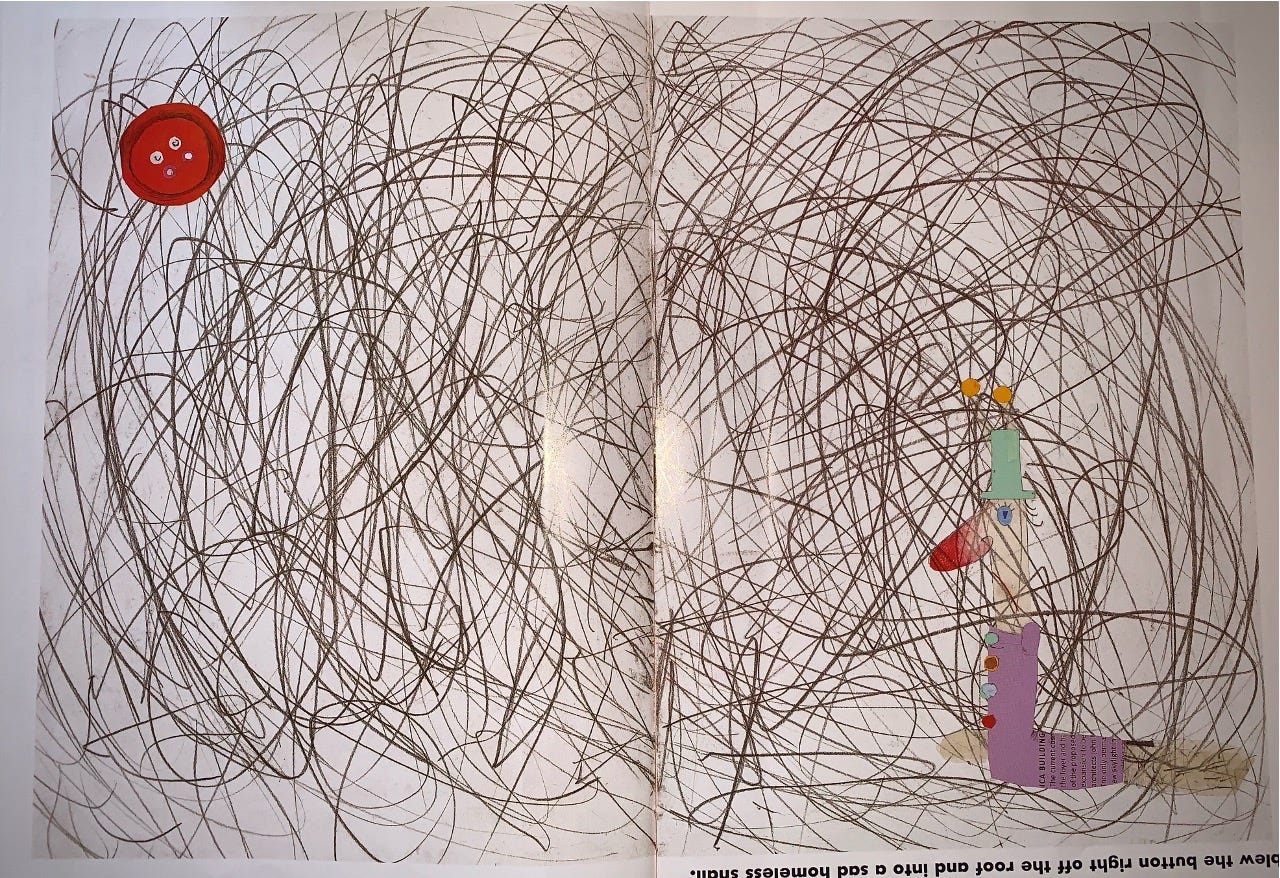Higher education systems are depicted as complex. I’ve been questioning whether my affinity for these depictions is valid, or protective self-deception. My reliance on complexity a mere crutch to avoid confronting the reality that I’m not smart enough to fully understand the sector I have worked in for decades.
Readers of this Substack may erroneously presume I personify at least a volume of ‘The Encyclopedia Brettanica’ of higher education policy. My work days are filled with technical questions about how to interpret Clause 42 (b) ix of one policy or another.
There are literally hundreds of thousands of policy clauses spread across higher education regulation and institutional policy that go beyond the limits of my cognition. The encyclopaedic challenge is getting harder. The scale of universities is increasing as they accumulate: new functions; new fields of knowledge; and new channels for knowledge transmission. All this sees universities attracting more government regulation and oversight. I’m not getting any younger, and with seniors moments my new, or soon to be ever present friend, the complexity is getting harder to wrangle.
This post explores how we manage this complexity and starts with an image depicting higher education policy and state of my neural connections.
Image by Fanelli, S. (1994) Button. ABC Books.
The Intellectual Division of Labour
Higher education is genuinely more complex than I or others can fully grasp. Universities manage complexity by establishing an intentional and effective segmentation of intellectual labour. Every organisation will do this differently.
Henry Mintzberg’s ‘Structure in 5’s’ provides insight into how organisations arrange their staff into internal structures. Mintzberg characterised universities in his typology as ‘professional bureaucracies’. The higher education workforce and institutional structures have evolved over the 40 + years since Mintzberg’s 5’s were published, and might warrant a new typology or descriptor.
In my opinion Mintzberg’s ‘technostructure’ and ‘support staff’ components have grown to be as big, if not bigger than the ‘operating core’, with the ‘strategic apex’ becoming more important in mediating its positional power through a widening ‘middle line’. The academic operating core has consequentially lost power in what has proven to be a zero-sum power game.
Sara Lee
Mintzberg’s structure in 5’s characterises organisations as interconnected blobs of functional activity. I love how ‘structure in 5’s’ rolls off the tongue as easy as it is to visualise the blobs of activity associated with the strategic apex and operating core. Good models are easy to understand, align with reality, and are readily applied.
Another less cited but more enjoyed model is the Sara Lee model. One cannot have grown up in the 80s without having been bombarded with advertising for, and eaten delicious varieties of pie and danish. All this prepared layer upon layer upon layer.
Organisations like universities are comprised of both amorphous structural Mintzberg blobs, and Sara Lee-like layers of bureaucratic process. In every university I have worked in I’ve come across processes and systems where there is what I’d consider to be an excessive level of authorisation. Layers of review. Layers of approval. Layers of consultation. Layer upon layer upon forking layer. Frustrating at times, but it’s hard to imagine how the professional bureaucracy of a university could function without codified rules requiring 92 forms be completed in triplicate.
Freedom and Responsibility
I’ve written before about Netflix and their approach to organisational design and bureaucracy. The ‘Netflix Culture Deck’ (original 2009 version) and (latest version) include content on catalysts for rules in organisations. Netflix’s theory is that as scale and complexity increases, there is a decrease in the talent density of organisations.
A reduction in talent density can lead to more errors, necessitating the introduction of rules and processes to provide clearer guidance for work, and for workers. Netflix’s current mantra is ‘people over process’, and the ‘(almost) no rules rule’. Staff have freedom to use judgement and are responsible for their actions.
Whilst I’m a fan of the culture deck and intent of their approach, their analysis is not directly transferrable to higher education for at least a couple of reasons.
For one, there is higher talent density in comprehensive universities when compared with smaller more specialist universities or higher education providers. More talent means more functions which leads to more rules. More functions mean more regulatory requirements which means even more rules.
This is not a function of employing too many imbeciles (like myself) who need step by step guidance on every work related activity. Netflix lambasts this tendency to over codify things in the original slide deck by stating that ‘Netflix has no clothing policy, but no one comes to work naked.’ I encourage you to reflect on rules in your own institutional setting to identify superfluous policy rules akin to clothing policy.
Secondly universities can be a crucible of ‘high IQ politics’’. The satirical handbook for high IQ politics Microcosmographia Academica - Being a Guide for the Young Academic Politician was published back in 1908 and is still going strong. I have often wondered whether the CIA Simple Sabotage Manual - particularly Section 11 and ‘General Interference with Organisations and Production’ was inspired by the Microcosomgraphia. I suspect at least some staff are following these guide books closely.
The intellect of staff and students often means there can be creative ways of playing the game, or bending or questioning the rules, all of which leads to greater precision and detail in the composition of policy. Why have one simple policy clause when you can have one with five sub-clauses that seek to address the concerns of Young Men in a Hurry, Liberal Conservatives, Conservative Liberals, Non-Placets, and Adullamites.
Netflix prides itself on allowing its staff to get on and do what they believe to be the right thing to do, without having to rely too much on bureaucratic process. One can fetishise an imaginary university with (almost) no rules, but this would be chaos. Every academic marching to the beat of their own drum, and nothing to counter the centrifugal forces that would see everyone running in opposite directions. This concept is better covered and explained by Burton Clark (p28).
It is rules that bind the university together, and my PhD was predicated on a notion that the university is nothing more than a “mechanism held together by administrative rules and powered by money” (p16) (a quote itself from Clark Kerr). Universities thrive because of their rules, even if people like me grumble that there are so many of them. There is however, one key downside to having so many rules, and that is that someone right now is probably inadvertently breaking one.
Mistakes happen
Many rules are, as Netflix suggests, a response to errors. There have been some high profile mistakes over the last year or so that highlight that even with complex rules and Sara Lee like layers of scrutiny, big mistakes happen across a variety of institutions and domains.
In 2023 a Year 12 maths exam included questions with errors.
In 2024 Year 12 practice exams included the actual exam questions, before the issue was identified and questions amended.
Human embryos have been implanted successfully into the wrong body.
Netflix’s (almost) no rules policy wouldn’t fly in an IVF clinic, and even with rules, protocols, and training the rules were not impervious to error. That the 2024 exam issue arose after new policy controls were put in place following the 2023 issue highlight that rules are not always the solution to a problem.
Sometimes errors can be a good thing, and if one error had not been made I’d not have been inspired to learn about competitive ploughing.
Let Peace Cultivate the Fields
2025 is a big year for international ploughing with the 70th edition due to be held in Prague in September. Since 1953 it is tradition that participants bring a sample of rock from their home country to the event such that at cairn can be constructed to commemorate the event, and as a symbol of peace.
They are called Cairns of Peace, inscribed by the words ‘let peace cultivate the fields’.
Pretty forking cool.
Here is a picture of a Cairn of Peace from a University that hosted the World Ploughing Championships back in 1977.
I was drawn to this not by my fascination for tractors and ploughing but a sign that pointed to something I imagined to be something entirely different.
There oughta be a rule for that.
I hope you enjoyed reading. If you did, please share, like, subscribe, or comment.








Some interesting thoughts there Matt, ones I think are good to contemplate as this organisation rumbles towards some kind of imagined more efficient and sustainable future state.
Here are a few of my own in response:
- Great to see Henry Mintzberg getting a mention. He had for me the most compelling account of managerial processes I’ve encountered, and one I have practiced – that set of practices around informal management that I think are key to understanding how to manage people.
- I also like that he names what for many of us in quality would be a familiar role, that of the informational manager. It relies to a significant extent on a capacity to seek, absorb, review, critique and convey information from a wide range of sources. So in our world, networks and communities of practice are incredibly important to doing this well.
- There is quite a ‘trend’ in and around this theme of policy and rules as friend or foe. I'm thinking of Ezra Klein’s book Abundance – which is something of a critique on rule making in liberal cities becoming barriers to liberal policy outcomes. And here I think he makes a mistake in labelling it liberal, for it is a politically agnostic problem. He points to it as a problem with liberal law making in particularly around housing and infrastructure. It’s all very “well, DOGE is too much, but maybe there is a point in working for government efficiency." And I think he ignores how bad actors use these rules to their own ends (astroturfing anyone?).
- These ideas are having a moment, and that is clear in NSW where the Minns Government is keen to set aside 'handbrakes' on housing development by setting aside 'zoning' barriers.
- What it of course misses, is that the rule making power of the state can be turned in different directions, Hence Title 5 of the Civil Rights Act is the anvil on which Harvard and other enemies of the US administration are being hammered. Be careful what you wish for. Rules for the powerful and unaccountable are useful tools not obstacles.
- Last one - one of our old VCs reckoned that much of his role could be replaced by well trained AI that could determine in any given situation whether any decision he was considering making was within or outside policy. Interesting.